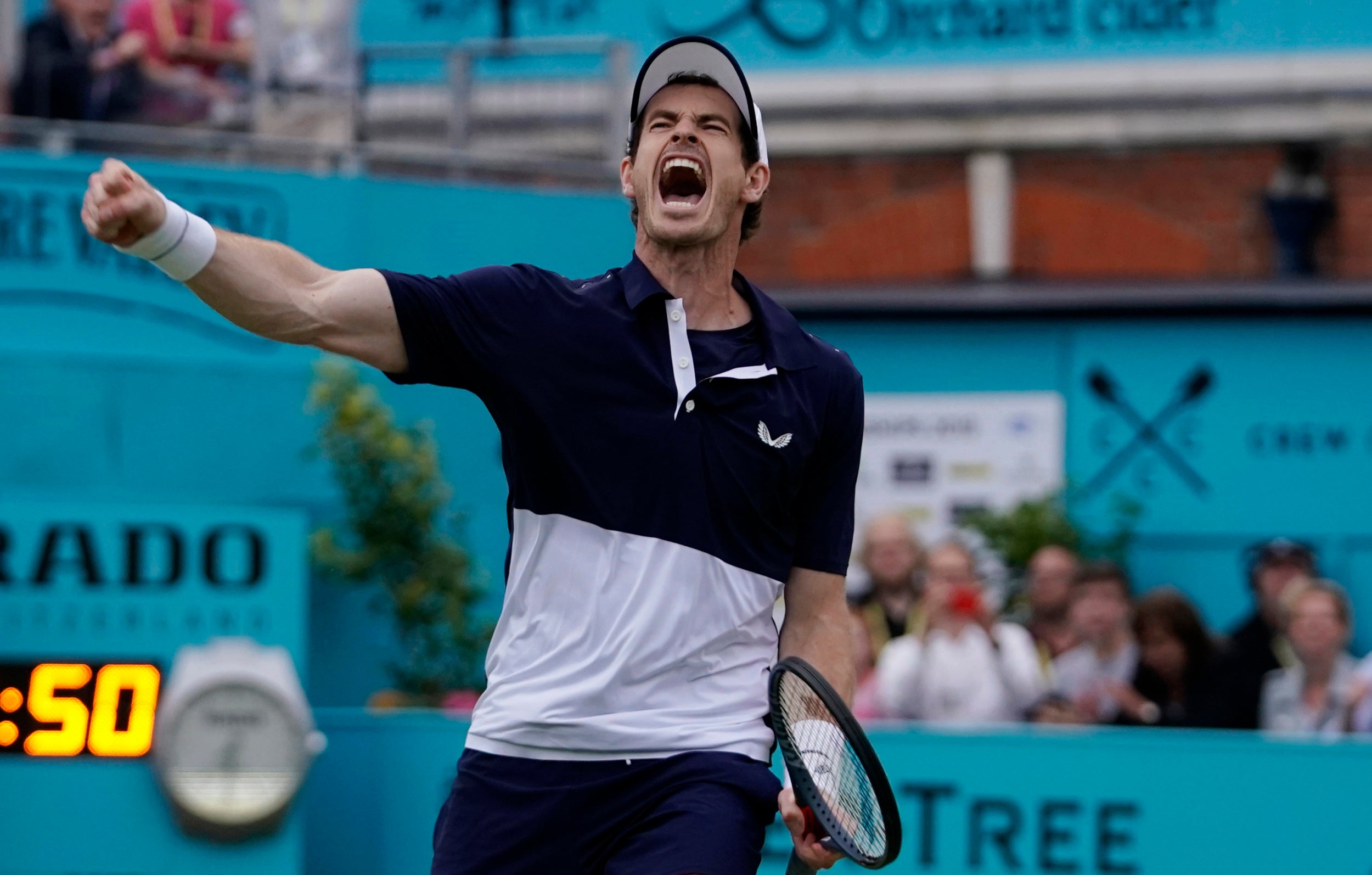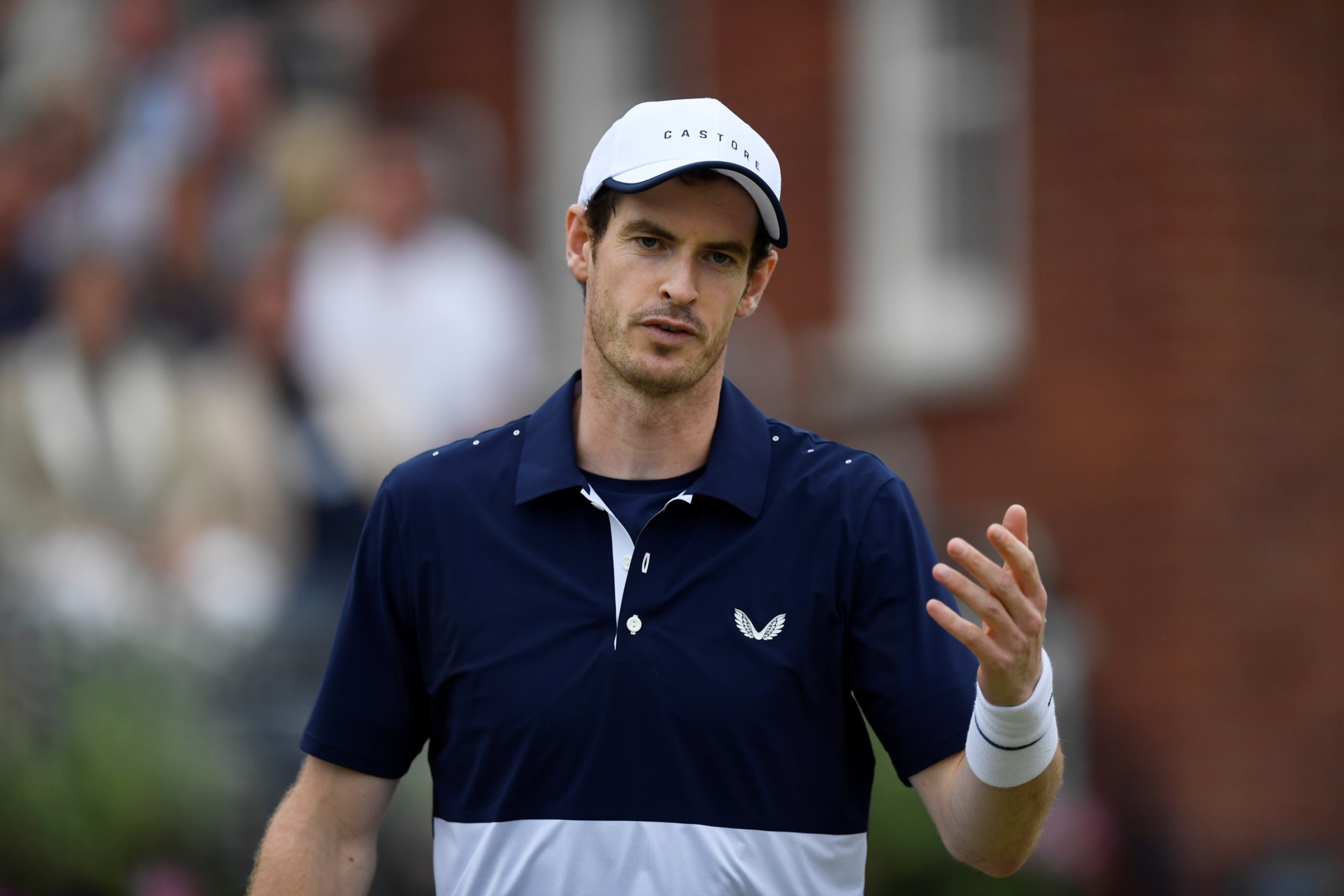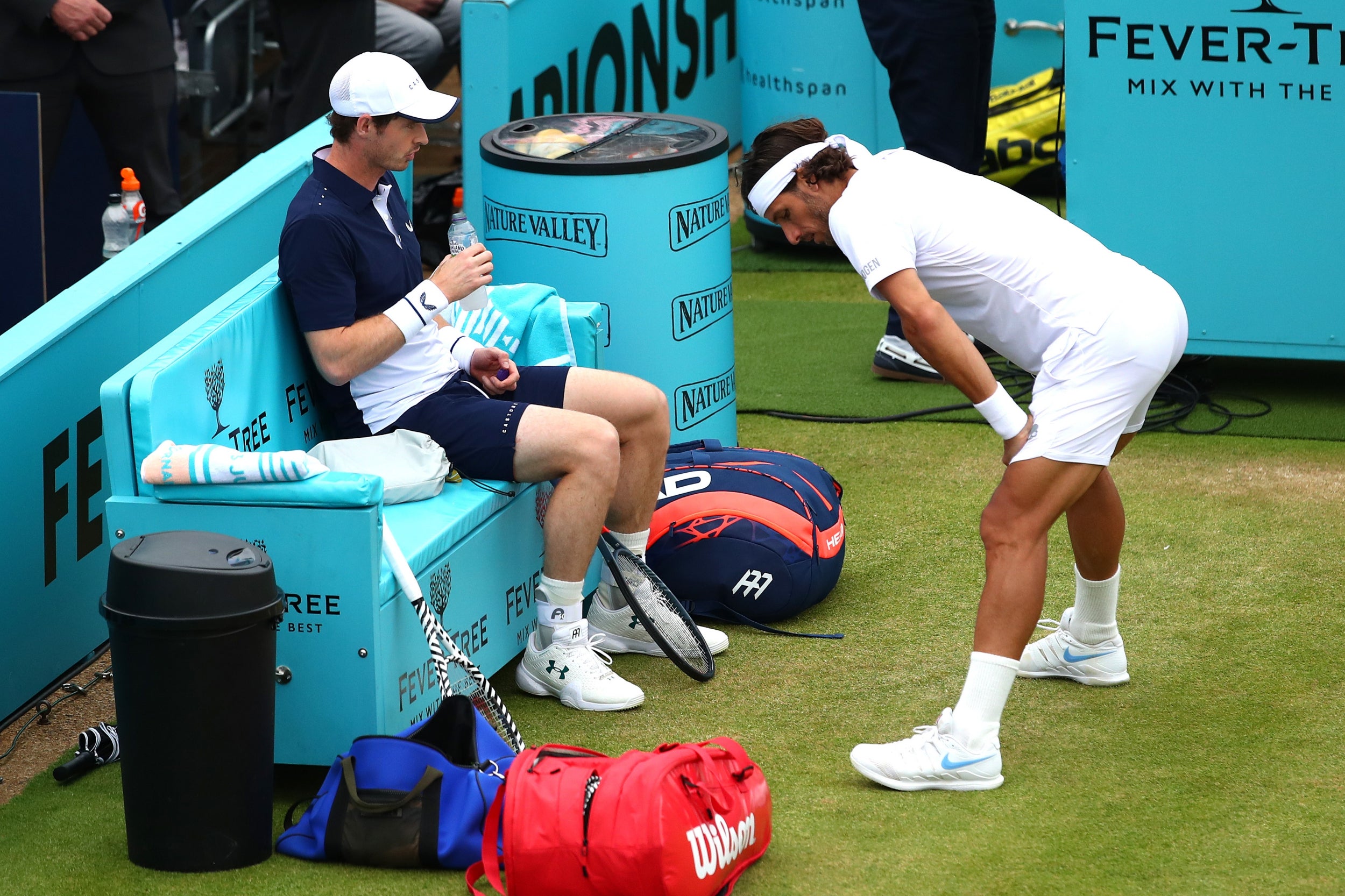Andy Murray eyes US Open and outlines plan for singles return after winning Queen’s doubles with Feliciano Lopez
The Scot combined with the Spaniard to down American Rajeev Ram and Britain’s Joe Salisbury for his first title of any kind in more than two years

Your support helps us to tell the story
From reproductive rights to climate change to Big Tech, The Independent is on the ground when the story is developing. Whether it's investigating the financials of Elon Musk's pro-Trump PAC or producing our latest documentary, 'The A Word', which shines a light on the American women fighting for reproductive rights, we know how important it is to parse out the facts from the messaging.
At such a critical moment in US history, we need reporters on the ground. Your donation allows us to keep sending journalists to speak to both sides of the story.
The Independent is trusted by Americans across the entire political spectrum. And unlike many other quality news outlets, we choose not to lock Americans out of our reporting and analysis with paywalls. We believe quality journalism should be available to everyone, paid for by those who can afford it.
Your support makes all the difference.Andy Murray is contemplating a return to singles competition in August, just seven months after undergoing the hip operation that he feared might end his career.
In the wake of his remarkable victory alongside Feliciano Lopez in the doubles final at the Fever-Tree Championships at Queen’s Club on Sunday, Murray suggested that he might aim to play singles at the Cincinnati Masters in mid-August before returning to Grand Slam singles action at the US Open a fortnight later.
“If I keep progressing, I would like to try to play singles,” Murray confirmed after partnering Feliciano Lopez to a 7-6, 5-7, 10-5 victory over the American Rajeev Ram and Britain’s Joe Salisbury.
“I think I have a couple of options after Wimbledon. I could continue with doubles but start training and practising singles through the US Open swing, and then try and maybe play singles after that. Or I could take a longer break post-Wimbledon of maybe, let’s say, a month or six weeks to get myself ready for singles and then try and play close to the US Open time.”
A beaming Murray said that he had been surprised not to have felt any pain from his hip during his first comeback tournament. “I expected it to be sore,” he said. “For the last five or six years after matches I had been getting some pain, some aching and throbbing. I would just wait for that to happen, but it doesn’t any more. And it’s brilliant.”
Murray said the victory at Queen’s – his first title anywhere for more than two years and his first in doubles without his brother – felt more special than some of his previous singles triumphs.
“I’ve just won the doubles here with Feli – with a metal hip,” Murray said with a smile. “It’s mental, really. It’s a cool thing to be able to have done, because of where I was a few months ago. Even as recently as two months ago I just wasn’t thinking about this. I was just really, really happy to be pain-free and enjoying life, literally just doing normal things. So it’s really special.”
While Murray would like to play singles again he said he would not mind if it never happened. At this year’s Australian Open, where he played through great pain, the Scot had suggested that he would not be interested in a future in which he played only doubles, but the experience at Queen’s Club, combined with the fact that he is now pain-free, have helped to change his thinking.
He might even be happy to pursue a new career as a doubles specialist.“I got so much enjoyment and happiness after winning a first-round doubles match here that that’s enough,” he said.

Murray said his rehabilitation was about more than just attempting to play singles again. “It’s to protect my hip for the longer term to make sure that my muscles are in the correct balance so that I’m not impacting the hip in the same spot all of the time,” he said. “I need to improve the range of motion in my hip, as well, so that when I’m changing direction there is a bit more freedom for it to move around.”
It was a remarkable first week back for Murray, whose doubles adventure this summer has only just begun. He will partner Brazil’s Marcelo Melo, the 2017 Wimbledon doubles champion, at this week’s Nature Valley International at Eastbourne, where their first-round opponents will be the top seeds, Juan Sebastian Cabal and Robert Farah. Murray and Lopez beat the Colombians in the first round at Queens last week.

At Wimbledon, which starts next Monday, Murray will partner Pierre-Hugues Herbert, who has won the doubles title at all four Grand Slam tournaments. Murray also plans to play in the mixed doubles, though he has yet to find the right partner. Ashleigh Barty, Victoria Azarenka and Kristina Mladenovic have all turned down the former Wimbledon champion.
Playing doubles is providing Murray with both a refresher course in competitive tennis and a guide to his fitness. While the last week has been a good test of his movement – which has been remarkable considering that he is playing with a metal hip and has been back practising for less than two months – the Scot knows that returning to singles competition will represent an even greater challenge. Playing singles will mean more running, more twisting and turning, longer rallies and longer matches.
For the home crowd at Queen’s Club, last week was all about Murray, but in truth the man of the tournament was Lopez, who became the first player to win the singles and doubles titles at the event since Mark Philippoussis in 1997.

The doubles final was 37-year-old Lopez’s fifth match in little more than 24 hours, yet he was the key player in the deciding tie-break, hitting five successive winners to set up five match points for his team, of which only one was required. The Spaniard, who beat Gilles Simon 6-2, 6-7, 7-6 in the singles final, was on court for four hours and 40 minutes on the last day, which took his total on-court time for the week to 15 hours and 26 minutes.
Join our commenting forum
Join thought-provoking conversations, follow other Independent readers and see their replies
Comments